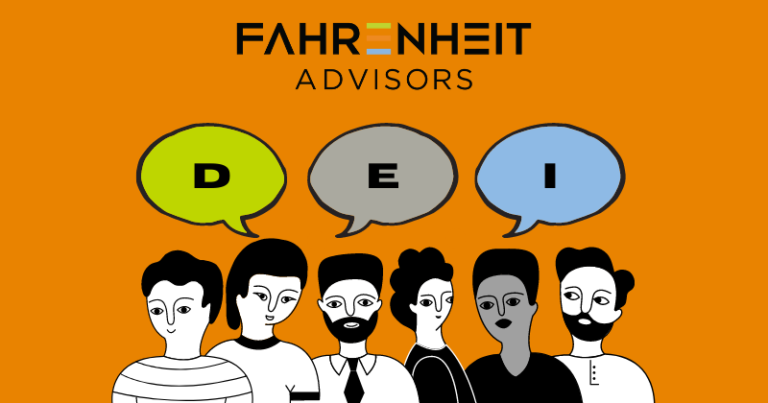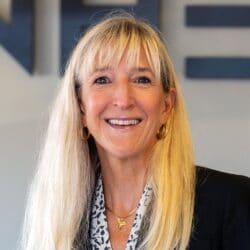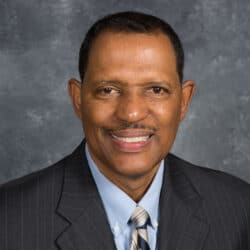4 Ways to Overcome DEI Challenges Within Your Organization

Whether your organization needs to develop a Diversity, Equity, and Inclusion (DEI) program, or improve the one it currently has in place, expect some challenges.
The Virginia Council of CEOs commissioned a survey to better understand the Diversity, Equity, and Inclusion (DEI) efforts of its members. The findings gleaned from this survey were compiled into a report and provide an insightful look at the challenges CEOs face. The report is free, and can be found here on the Virginia Council of CEOs website.
An analysis of the survey responses from 56 top executives of small to mid-size organizations in Virginia shows that while nearly 90% of CEOs believe DEI efforts are important, and a majority are engaged in some level of DE&I work, only 14% have a mature program in place.
4 Ways to Overcome DEI Challenges
So, what are the obstacles standing in the way? The report uncovers 4 main challenges. Let’s look at each and ways to overcome them:
1. Getting Started with DEI
Perhaps you’ve researched the topic, surveyed your team, and maybe even attended a management training workshop in DE&I. Where do you go from here? How do you jump start your DEI efforts?
While it might be uncomfortable at times, changes can’t occur without action. It begins with commitment from the top: the support and involvement of leadership, including the CEO, executive team, and board of directors. Throughout the entire journey, it is critical to listen to your employees and seek their input along the way. What you learn will determine your business objectives, along with the changes needed to meet these objectives.
2. Focusing Attention & Investing Resources
You have deemed DEI important and are committed to making the journey. You may have planned some initiatives and have some objectives. What do you do now, and who is going to lead the initiative?
It is important to designate a leader (or leaders) for your DEI efforts, and those leaders need the full support of senior leadership as committed champions. From here, you can begin to develop a clear mission, vision, and strategy for your DEI initiatives, as well as make budgeting and staffing considerations. This is a good time to review your current policies and procedures, and consider creating a DEI council, discussion groups and/or employee resource groups within your organization. Incorporating awareness and DEI training into your training and development programs, as well as recognizing positive DEI behavior, can provide support and gain buy-in for your initiatives.
3. Attracting & Hiring Diverse Candidates
The survey showed that most business leaders are focused on diverse hiring and want to build a workforce and leadership team that reflects the communities they serve and/or where they are located. If this is your focus, how do you attract a diverse pool of qualified candidates? A good place to start is by evaluating your job descriptions, as well as your recruiting process and procedures, to see what might be missing.
You will want to ensure everyone in your organization understands your diversity initiative, and why it is important. Highlight your DEI commitment on your website, and incorporate it into your applications, handbook, and onboarding materials, etc. Provide DEI training and awareness (including unconscious bias training) for all those involved in the recruiting and hiring process. If your recruiting team is small or lacks diversity, consider partnering with external organizations and groups that align with diverse communities, and post jobs on diverse job boards. Get creative and be intentional!
4. Incorporating DEI Organization-wide
CEOs realize they need to expand DEI throughout their organizations and recognize the value of being intentional in these efforts. How do you engrain DEI practices so that they become part of your organization’s culture? This effort involves integrating DEI policy into your organizational strategic and/or operating plans. All levels of management need to be actively engaged and ensure that DEI is part of your organization’s communications plan. “Walk the talk” as a leader and demonstrate diversity, equity, and inclusion in your day-to-day life. Ongoing DEI training and development is key, as well as measuring and evaluating your efforts throughout the journey for continuous improvement. You may make mistakes along the way, but you will continue to evolve and grow as an organization!
Diversity can open the door for productivity and innovation. Equity ensures everyone is treated fairly and provided the same access and opportunities for development and advancement. Inclusion provides a sense of belonging and is where organizations can really see the benefits of workplace diversity. To be sustainable, DEI efforts must adapt and evolve along with your workforce. It is an actionable journey, and it is important to be flexible and able to adjust along the way.
Does your organization need to address Diversity, Equity, and Inclusion? The Fahrenheit Human Capital Team includes DEI subject matter experts who can identify your DEI-related challenges and help you develop a strategy and roadmap to achieve your DEI goals sustainably.
Let’s get started – Experts@FahrenheitAdvisors.com
About the Author
 With over 25 years of experience, Katherine Zampolin provides a broad range of experience in leadership development, coaching, corporate culture, and talent management. Through her authentic and practical approach, she partners with organizations to help them strengthen their culture, engage and develop their employees, and reach their goals. Katherine has facilitated a broad range of training programs across all levels, with topics ranging from leadership skills and organizational change to diversity and inclusion and team building.
With over 25 years of experience, Katherine Zampolin provides a broad range of experience in leadership development, coaching, corporate culture, and talent management. Through her authentic and practical approach, she partners with organizations to help them strengthen their culture, engage and develop their employees, and reach their goals. Katherine has facilitated a broad range of training programs across all levels, with topics ranging from leadership skills and organizational change to diversity and inclusion and team building.
Additional Fahrenheit DE&I resources
Danielle Gilbert evaluates, elevates, and equips companies with human resources solutions to reduce risk, improve processes, and drive value. Danielle is a trusted business advisor with more than sixteen years of experience for the delivery and execution of core human resources functions to employees, managers, directors, and CEOs.
Ted Smith is a senior HR executive with more than 25 years of experience in human resources management. Throughout his career, he has demonstrated the ability to work effectively in all human resources functions and business challenges at all levels with focus on optimizing employee engagement, organizational culture, team effectiveness, and both individual and organizational performance.
As an operationally focused strategic senior human resources professional, Melody Donovan-Hopkins has over 17+ years of progressive experience in the information technology, healthcare data analytics, life sciences, and financial industries. She is a strategic human resources servant leader with business acumen managing the employee life cycle.




